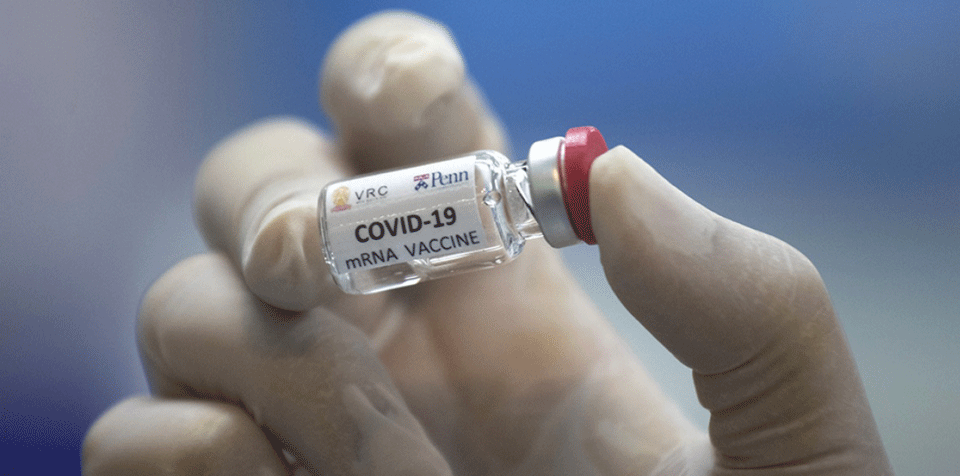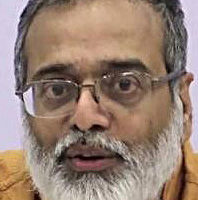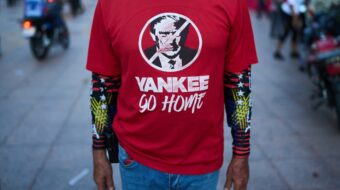
Donald Trump launched a new vaccine war last week, but not against the virus. It was against the world. The U.S. and Britain were the only two holdouts in the World Health Assembly on the declaration that vaccines and medicines for COVID-19 should be available as a public good, and not under exclusive patent rights.
Having badly botched his COVID-19 response, he is trying to redeem his electoral fortunes in the November elections by promising an early vaccine. Trump’s “Make America Great Again” is vaccines for “us,” but the rest will have to queue up and pay what big pharma asks, as they will hold the patents.
In contrast, all other countries agreed with the Costa Rican proposal in the World Health Assembly that there should be a patent pool for all COVID-19 vaccines and medicines.
President Xi Jinping said that Chinese vaccines would be available as a public good, a view also shared by European Union leaders. Among the eight vaccines in phase 1 and 2 of clinical trials, the Chinese have four, the U.S. two, Britain and Germany one each.
Trump has given an ultimatum to the WHO of a permanent withdrawal of funds if it does not mend its ways in 30 days. In sharp contrast, almost all countries including close allies of the U.S. rallied behind the WHO. The failure of the U.S. Centers for Disease Control and Prevention (CDC) against COVID-19—with four times the annual budget of the WHO—is visible to the world.
The CDC failed to provide a successful test for the SARS-CoV-2 even after two months of the WHO distributing successful test kits to a large number of countries. Trump has yet to hold his administration and the CDC responsible for this criminal bungling.
This, more than any other failure, is the reason that the U.S. numbers for COVID-19 are now more than 1.75 million and almost one-third of all global infections. Contrast this with China, the first to face an unknown epidemic, stopping it around 83,000 cases, and what countries such as Vietnam and South Korea have done.
If we do not address the intellectual property rights issue in this pandemic, we are likely to see a repeat of the AIDS tragedy. People died for 10 years as patented AIDS medicine was priced at $10,000-15,000 for a year’s supply, far beyond their reach.
Finally, it was Indian patent laws—that until 2004 did not allow for such patents—that helped people to get AIDS medicine at less than a dollar a day, or $350 for a year’s supply. Today, 80% of the AIDS medicines in the world come from India. For big pharma, profits trumped lives, and they will continue to do so unless we change the world.
Most countries have compulsory licensing provisions that will allow them to break patents in case of epidemics or health emergencies. Even the WTO, after a bitter fight, accepted in its Doha Declaration (2001) that countries, in a health emergency have the right to allow any company to manufacture a patented drug and even import it from other countries.
Why is it then, that countries are unable to break patents, even if there are provisions in their laws and in the WTO’s Trade-Related Intellectual Property agreements (TRIPS)? It is U.S. bullying. Under U.S. domestic trade acts, it issues special reports threatening any country with trade sanctions that tries to compulsorily license any product.
India figures prominently each year, for daring to issue a compulsory license in 2012 to Natco for Nexavar, a cancer drug which Bayer was selling for $65,000 a year.
Bayer CEO Marijn Dekkers was quoted in 2014, saying, “…we did not develop this product for the Indian market… We developed this product for Western patients who can afford this product, quite honestly.”
This leaves unanswered how many people even in the West can afford a $65,000 bill for an illness. But there is no question that this would be a death sentence for anybody but the super rich in countries like India.
Though a number of other drugs were also under consideration for compulsory licensing at that time, India has not exercised this provision again after U.S. threats.
It is the fear that countries can break patents using their compulsory licensing provisions that led to proposals for patent pooling.
The argument was that since many of these diseases do not affect rich countries, big pharma should either let go of their patents in such patent pools, or philanthropic capital should provide the additional funds for developing new drugs for this pool.
It is this idea of patent pooling that has been backed by all countries in WHO, barring the U.S. and its loyal ally, Britain.
While patent pooling is welcome if no other measure is available, it also makes it appear as if countries have no other recourse apart from the charity of big capital. What this hides, as charity always does, is that people and countries have legitimate rights even under TRIPS to break patents.
The U.S., which screams murder if a compulsory license is issued by any country, has no such compunction when its own interests are threatened. During the anthrax scare in 2001, the U.S. secretary of health issued a threat to Bayer under “eminent domain for patents,” for licensing ciprofloxacin to other manufacturers.
Bayer folded and agreed to supply the quantity and at a price that the U.S. government was demanding without a whimper—the same Bayer which considers India as a thief for issuing a compulsory license.
The vaccines for COVID-19 might need to be repeated each year, as we still do not know the duration of its protection. It is unlikely that it will provide a lifetime immunity like the smallpox vaccine.
Unlike AIDS, where the patient numbers were smaller and could be stigmatized in different ways, COVID-19 is a visible threat for everyone.
Any attempt to hold people and governments to ransom on COVID-19 vaccines or medicines will see the collapse of the entire patent edifice of TRIPS that Big Pharma, backed by the U.S. and major EU countries, have built. That is why the cleverer parts of the capitalist world moved towards a patent pool for COVID-19 medicines and vaccines.
Unlike clever capital, Trump’s response on the COVID-19 vaccine is to simply bully his way through. He believes that with the unlimited money he is now willing to put into the vaccine efforts, the U.S. would either beat everybody else to the winning post or buy the company that is successful.
If he succeeds, he can then use “his” COVID-19 vaccine as a new instrument of global power. It is the U.S. that will then decide whether a country gets the vaccine.
Trump does not believe in a rule-based global order, even if the rules are in the favor of the rich. He is walking out of various arms control agreements and has crippled the WTO.
He believes that the U.S., as the biggest economy and the most powerful military power, should have the right to dictate to all countries. Threats of bombing and invasions can be combined with unilateral sanctions and, now, the latest weapon in his arsenal—withholding vaccines.
His problem is the days of a sole global hegemon are long over. The U.S. has shown itself as a crumbling giant and its epidemic response has been shambolic. It has been unable to provide virus tests to its people in time and stop the epidemic, which a number of other countries have essentially done.
China and the EU have already agreed that any vaccine developed by them will be regarded as a public good. Even without that, once a medicine or a vaccine is known to be successful, any country with a reasonable scientific infrastructure can replicate the medicine or the vaccine and manufacture it locally.
In India, as in many other countries, we have the scientific capability. We also have one of the largest generic drug and vaccine manufacturing capacities in the world.
What prevents us, or any country, from manufacturing vaccines or the drugs once they are developed? Only the empty threat of a failed hegemon on patents? Or the belief that in the U.S.-China vaccine war, we need to be on the U.S. side?
This article is adapted from a version that originally appeared in People’s Democracy, published in India.










